MAE 3302 Aerodynamics of Incompressible Flow
Homework 10 Solutions
Answers to Study Questions
- Why won't the source panel method work for airfoil calculations?
ans: Because it is not capable of producing a circulation around the airfoil.
- What is a vortex panel?
ans: It is a vortex sheet of constant or simply varying strength placed
on the surface of a body.
- Why are vortex panels needed for certain problems?
ans: In order to produce a net circulation.
- How can the lift be computed in a simple way when the
vortex panel method is used? (You may want to try this in your program.)
ans: Using the Kutta-Joukowski law
l = rU¥åj = 1NgjSj.
- Why is it best to use a combination of vortex and source panels
for airfoil calculations as opposed to only vortex panels?
ans:
Vortex panels alone are not effective since they induce no normal
component of velocity on themselves. This means that the [u\vec]·[n\vec]
boundary condition must be met entirely through the velocities induced
by adjacent panels.
- In what ways have the NACA airfoil designs been improved in recent
times? In what ways has the performance increased?
ans: Larger radius of curvature at the nose as well as reflexed lower
surface near the trailing edge are now common. The maximum lift coefficient
and the lift to drag ratios have increased.
- What role has the computer played in optimizing airfoils?
ans: The computer can evaluate various airfoil shapes very quickly. Thus
it is possible to consider a much larger collection of airfoils than could
be tested in a laboratory. It is also possible to automate the optimization
process on the computer so that the best performance out of thousands of
airfoil designs can be chosen.
- Why can't thin airfoil theory predict the onset of stall? How
can one then determine Clmax?
ans: Because thin airfoil theory is strictly inviscid and stall is a viscous effect.
Clmax can be estimated by combining thin
airfoil theory with boundary layer theory. Often experimental measurements
are required to determine Clmax concretely.
- What is meant by leading edge stall? What type of airfoil usually
stalls in this way?
ans: A flow separation that begins near the leading
edge and rapidly increases in size as the angle of attack is
increases. Airfoils with moderate thickness ratios (10 to 16 percent)
stall in this way.
- What is meant by trailing edge stall? What type of airfoil usually
stalls in this way?
ans: A flow separation that begins near the trailing edge and increases
in size as the angle of attack is increases. A thick airfoil usually stalls
in this way.
- What is meant by thin airfoil stall? What type of airfoil usually
stalls in this way?
ans: A separation that begins near the leading edge at fairly small angels
of attack and then increases in size as the angle of attack is increases.
Very thin airfoils, and flat plates in particular, usually stall in this way.
- What is the advantage of using a thick airfoil over a thin one?
ans: The maximum lift coefficient increases with thickness up to thickness
of about 12%.
- Other things being equal, roughly what thickness will result in
an airfoil with the highest possible Clmax?
ans: About 12%.
- How does a trailing edge flap work? What is its main objective?
ans: It increases camber which amounts to an upward shift in the lift curve, and ultimately to an increase in Clmax.
- How does a leading edge slat work? what is its main objective?
ans: It modifies the flow on the upper surface of the main airfoil such
that stall is postponed to higher angles of attack. The net result is
an increase in Clmax.
- Roughly how large can the lift coefficient be for an airfoil with
both leading edge slats and trailing edge flaps? How does this compare
with Clmax for the same airfoil with the high lift devices retracted?
ans: About 4.5. This is about 3 times the maximum lift coefficient for the
same clean airfoil.
- By what factor is the stalling speed of an aircraft reduced by
deploying a high lift system that results in a 50% increase in Clmax?
ans: Due to the square root dependence, roughly 25% (more exactly 1-Ö(1/1.5) = 0.18 or 18%).
- The high lift system shown in Figure 4.38 has not only tremendous lifting
capability but also results in enormous drag. Is this a problem for its use?
Why are there differences in the takeoff and landing configurations shown
in Figure 4.37?
ans: Large drag is desirable for landing so that the aircraft can descent
at a steep angle without increasing airspeed. Large drag is not wanted on
takeoff and that explains the more moderate high-lift device settings for
this flight operation.
- Why were most of the World War I aircraft relatively poor from an
aerodynamic standpoint. What major advance was made by Prandtl and his
group in Germany?
ans: Because they used very thin airfoils that could not achieve large
lift coefficients. Prandtl's group recognized the advantage of thicker
airfoil sections and these were incorporated in the design of the Fokker D-1
and D-VII.
- What is ideal incidence? How is airfoil performance enhanced if
the airfoil is designed to operate at the ideal condition?
ans: It is the angle of attack where the forward stagnation point is
located exactly at the leading edge. Flying at this condition, the airfoil
has a much more gentle pressure distribution and consequently reduced
skin friction.
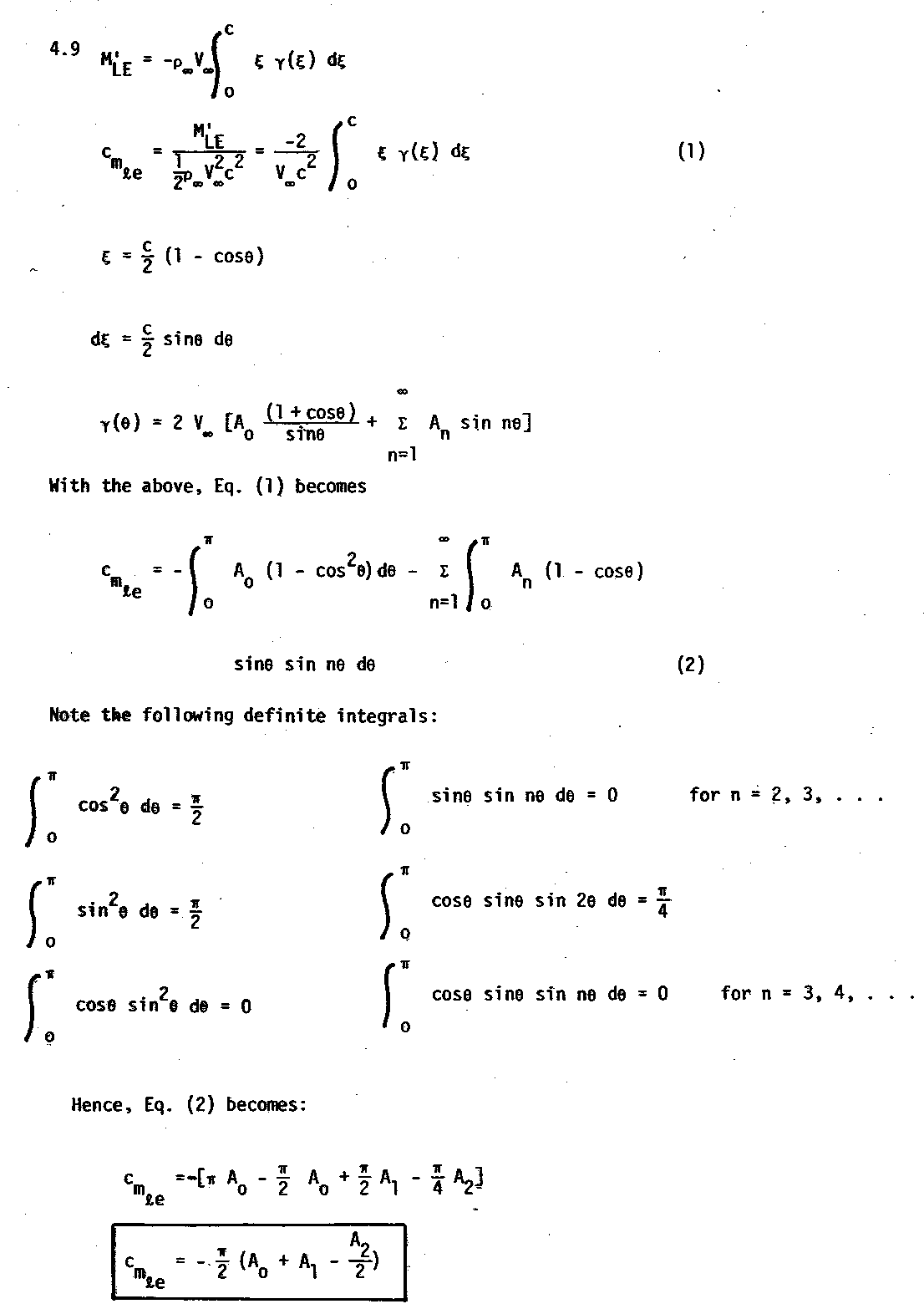
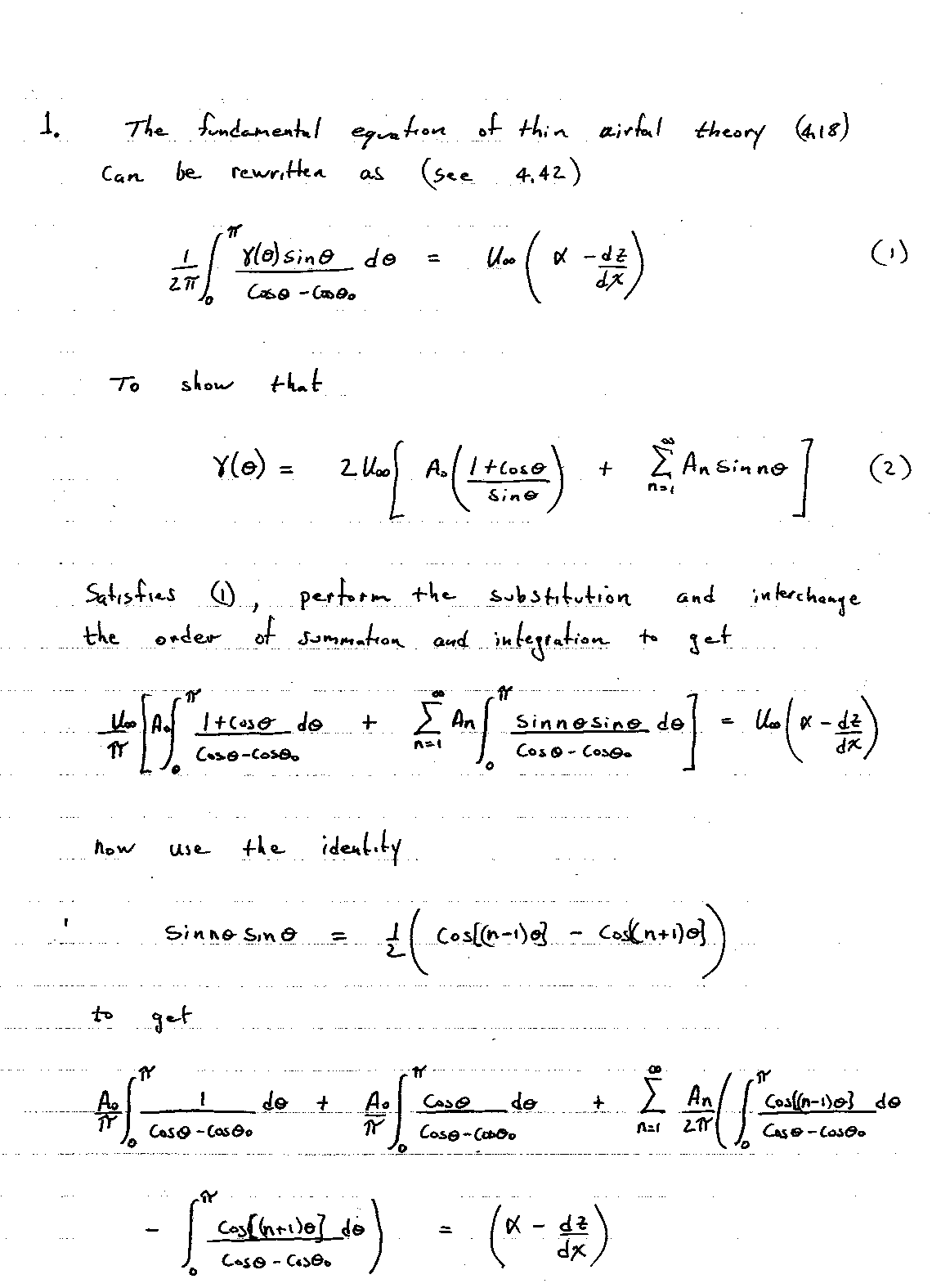
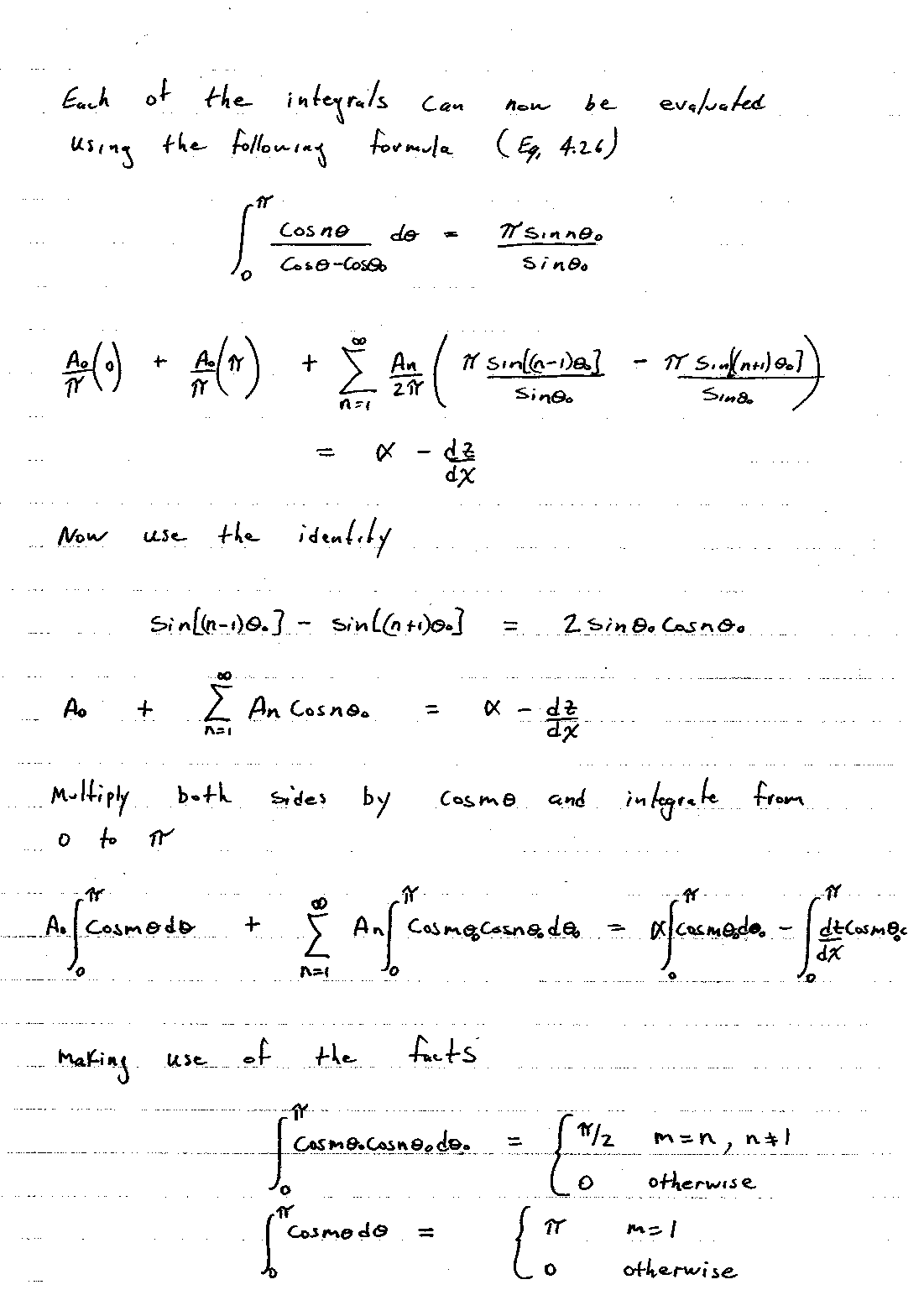
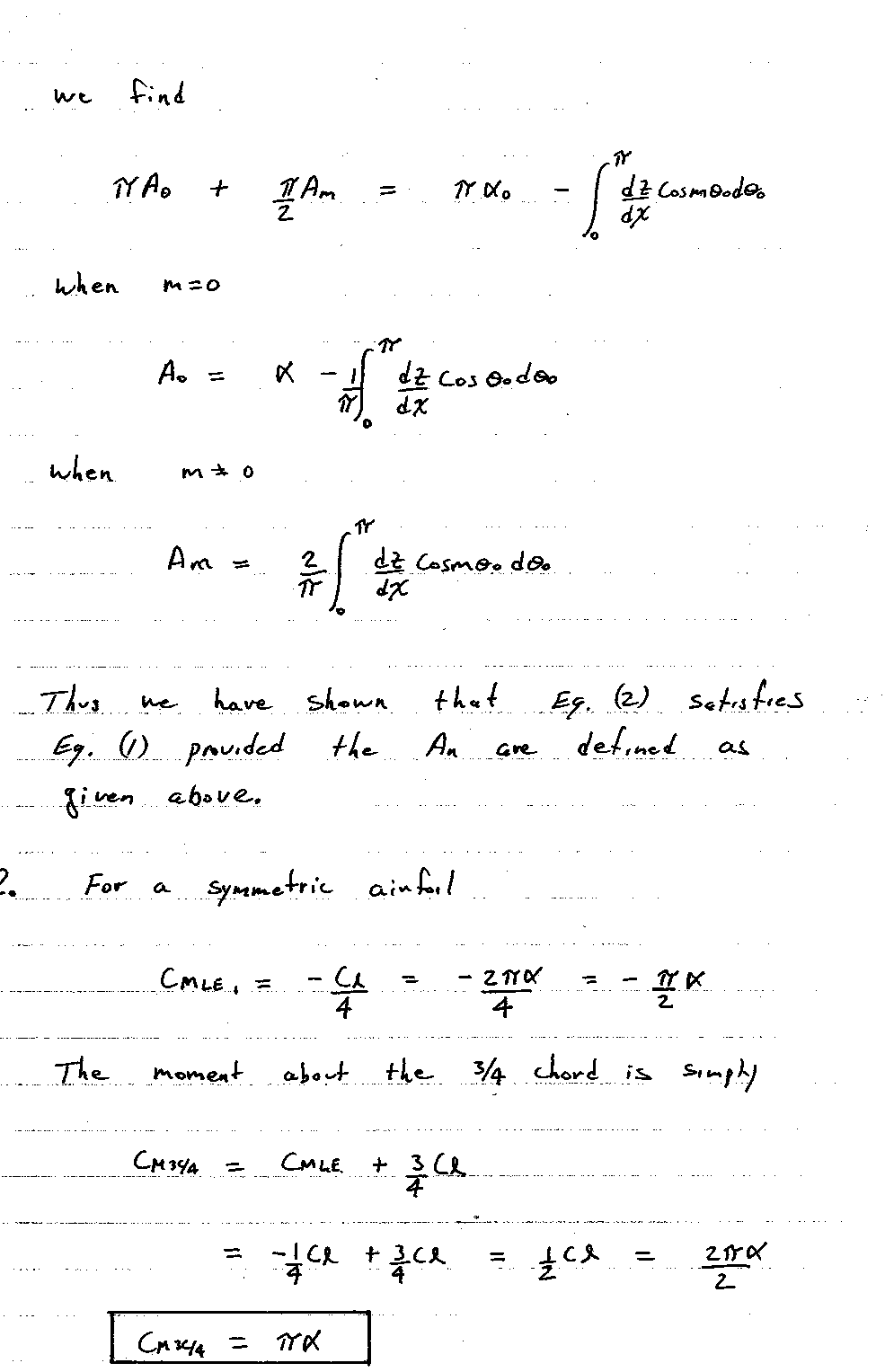
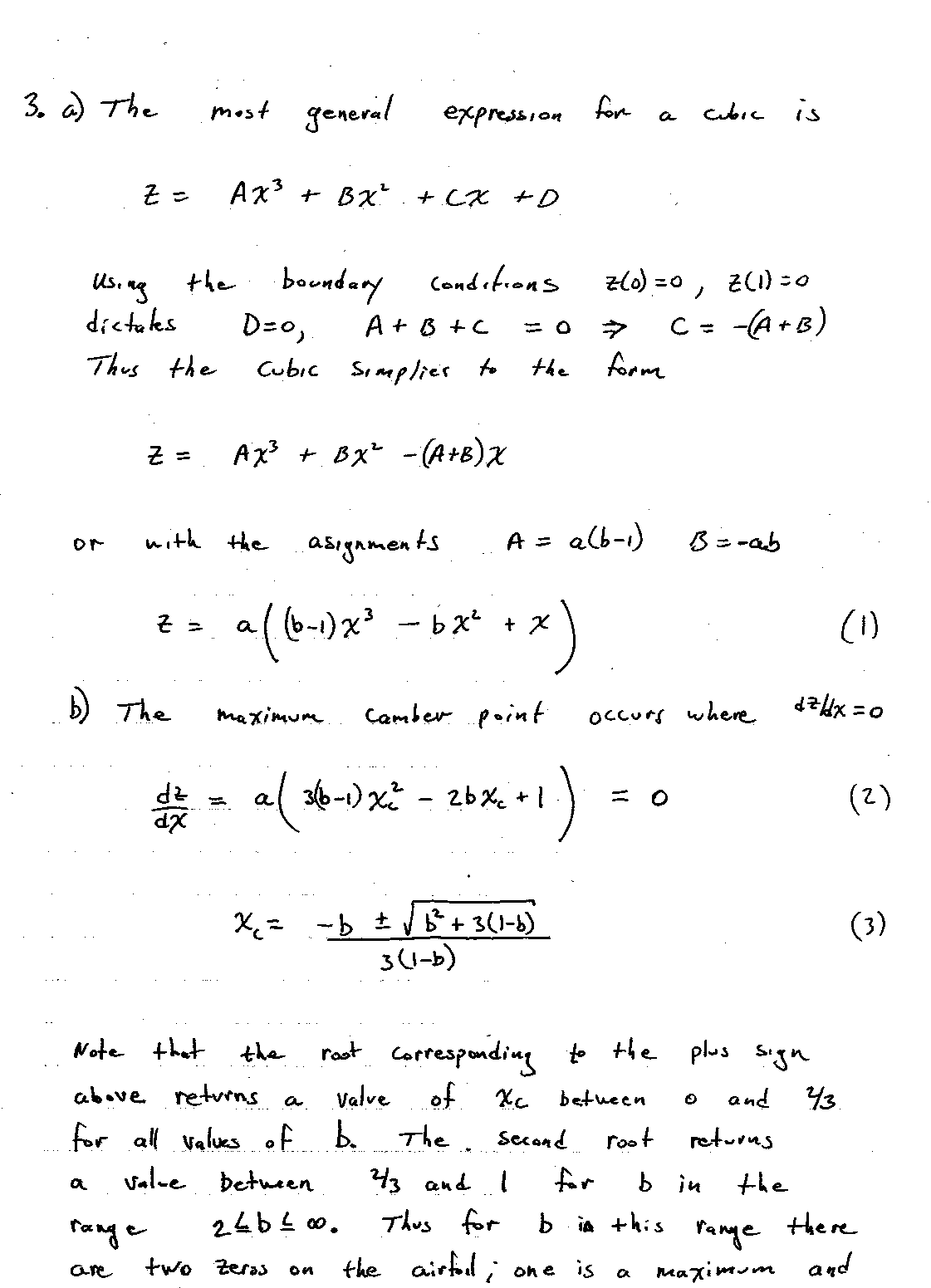
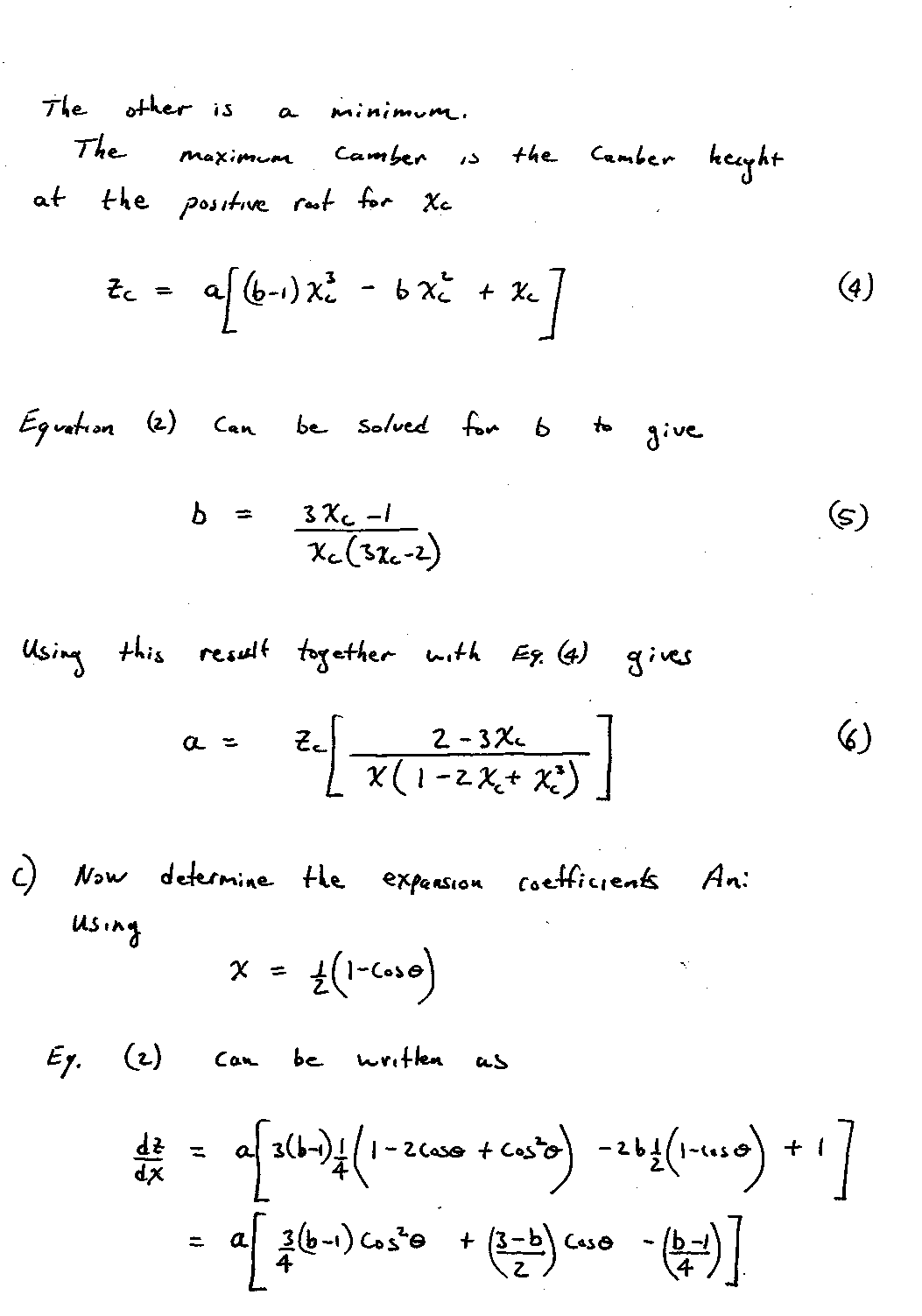
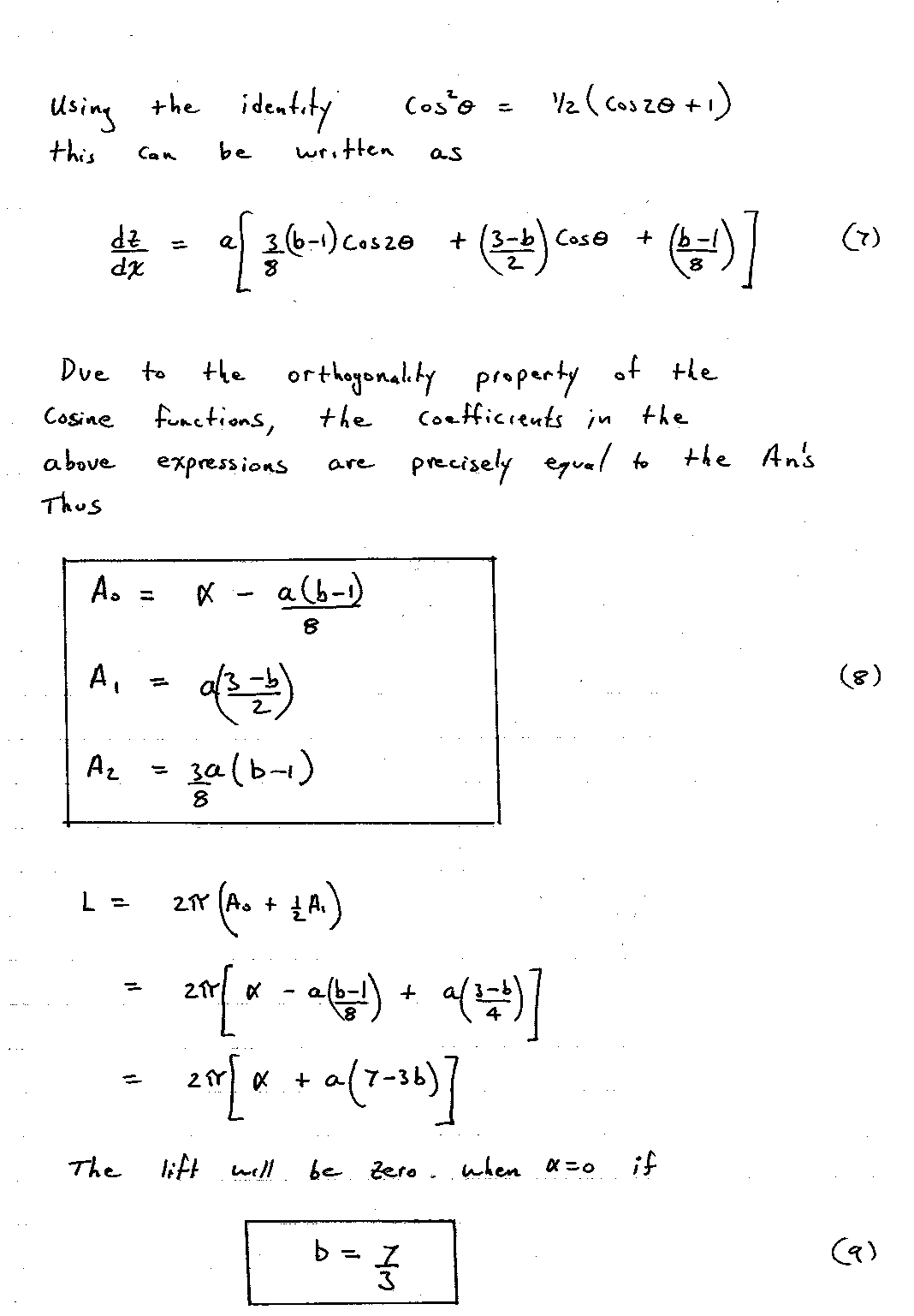
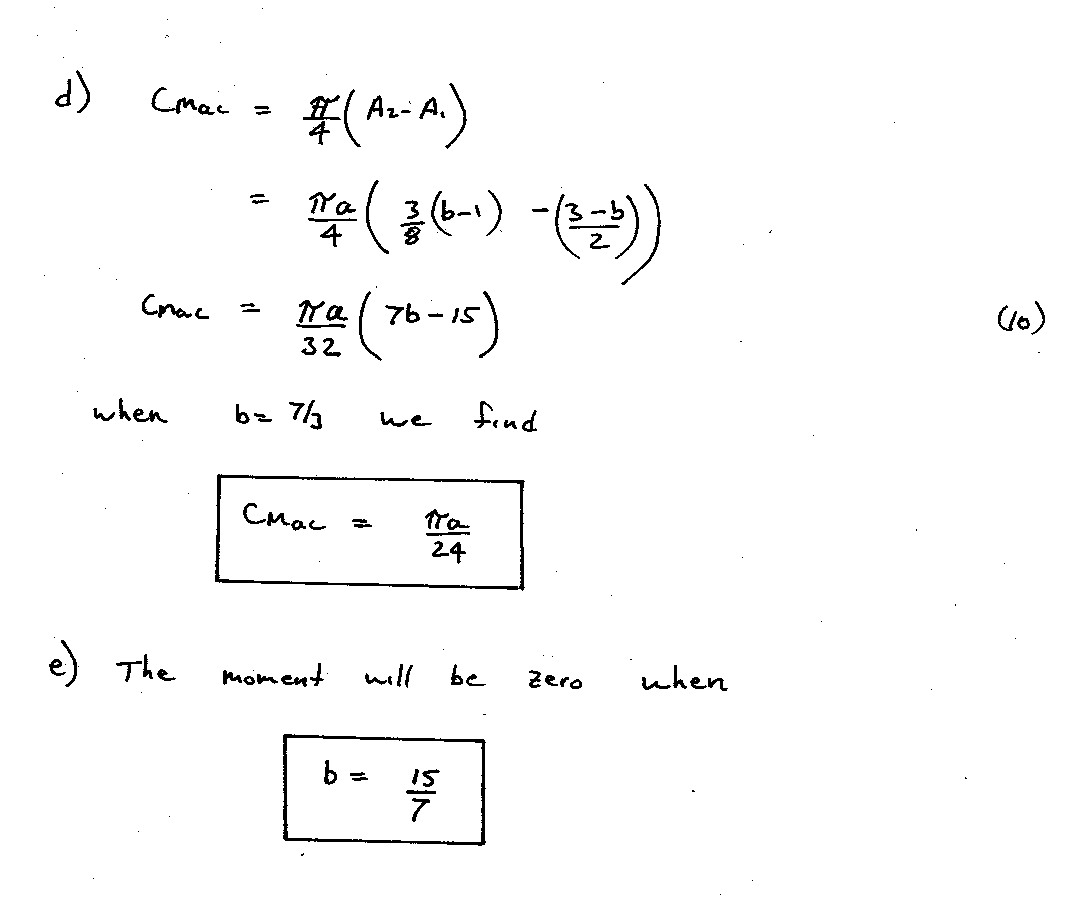
File translated from TEX by TTH, version 2.00.
On 4 Dec 1999, 09:25.















